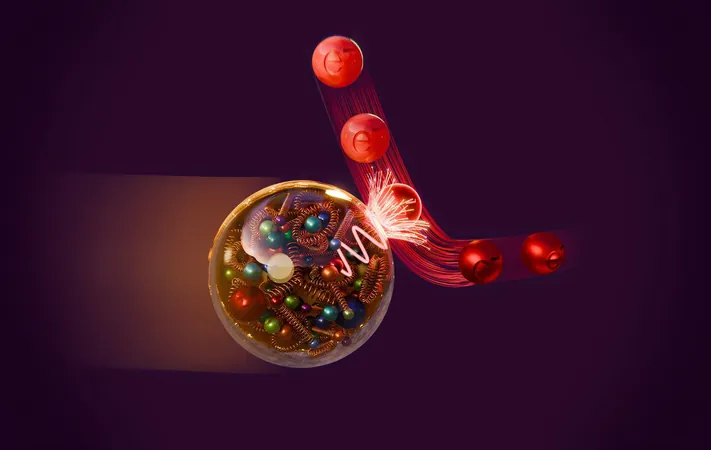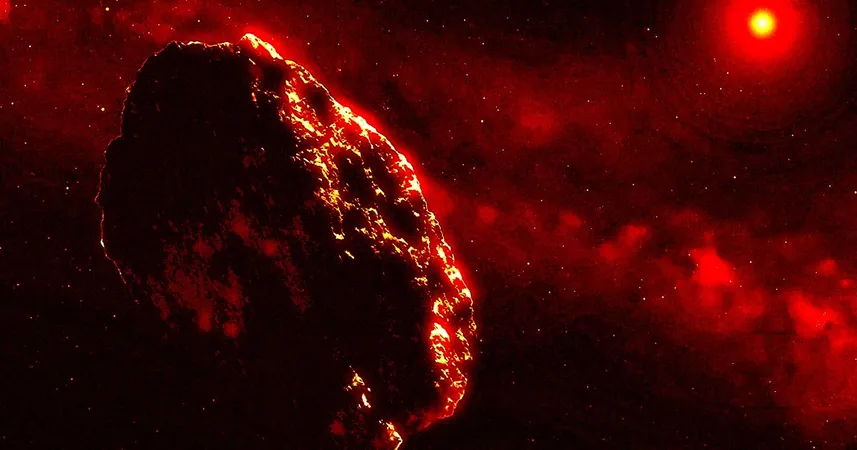
Unveiling the Mysteries of Quantum Entanglement: A New Look Inside Protons
2024-12-02
Author: Charlotte
Unveiling the Mysteries of Quantum Entanglement: A New Look Inside Protons
In a groundbreaking study, scientists from the U.S. Department of Energy's Brookhaven National Laboratory have introduced an innovative approach to explore the quantum entanglement of protons at an incredibly minute scale. Their unique method leverages data from high-energy particle collisions to delve deep into the quantum fabric that underpins protons, revealing surprises about their fundamental building blocks—quarks and gluons.
The findings, recently published in *Reports on Progress in Physics*, document a six-year quest to uncover how the entangled nature of quarks and gluons affects the stability and distribution of particles produced in electron-proton collisions. This phenomenon reflects what Albert Einstein famously termed "spooky action at a distance," where particles can exhibit correlations regardless of the physical distance separating them. In this context, entanglement emerges not over vast distances but rather within the confines of individual protons, with connections measured at less than one quadrillionth of a meter.
According to Zhoudunming (Kong) Tu, a physicist and co-author of the paper, this exploration adds a significant twist to the traditional understanding of protons. "For decades, the proton has been viewed as a mere assembly of quarks and gluons, focusing largely on single-particle properties. Now, with the evidence of entanglement, we recognize a much more complex, dynamic system at play," he stated.
A Quantum Leap in Understanding Proton Structure
Mapping out the interplay of entanglement among quarks and gluons opens new avenues for understanding not just protons, but also other phenomena in nuclear physics. Future experiments at the Electron-Ion Collider (EIC) planned for the 2030s aim to uncover how protons behave within a larger nucleus, significantly contributing to our grasp of fundamental particles and their interactions.
The research employs equations from quantum information science to predict how entanglement influences particle distributions emerging from high-energy collisions. This theoretical framework, developed by esteemed physicists Dmitri Kharzeev and Eugene Levin, draws parallels between entanglement and the disorder within systems, likening high-entropy states—like a cluttered room—to states of maximal entanglement in protons that produce chaotic particle distributions.
Connecting Past and Future Discoveries
This investigation was not solely based on new experimental data; the team also analyzed historical data from the Hadron-Electron Ring Accelerator (HERA) in Germany, utilizing an archival collaboration with retired physicists to assess older collision results. When comparing this data with theoretical predictions, scientists found a perfect match, underscoring the validity of their model and the relevance of entanglement to proton behavior.
“By unraveling the statistical behavior of proton interactions, we can use these insights to approach complex questions within nuclear and particle physics,” Tu added. The growing understanding of entanglement may help illuminate the nature of strong force interactions, revealing how quarks and gluons remain confined within protons and how entangled states influence their behavior in collisions.
The Road Ahead: Exploring the Nuclear Environment
As the research advances, scientists are poised to apply their findings to some pressing questions in contemporary physics—most notably, how entangled protons behave within the intricate environments of larger nuclei. This quest to understand the interaction of entangled protons amid a sea of other particles will drive future research at the EIC.
"Deciphering the subtle effects of the nuclear environment on protons could reveal the critical factors governing quantum coherence and decoherence," said Martín Hentschinski, co-author from Universidad de las Américas Puebla. The knowledge gained could reshape our comprehension of visible matter and the fundamental forces governing the universe.
Prepare for a paradigm shift in our understanding of the universe: these groundbreaking discoveries about quantum entanglement may hold the key to unlocking the secrets hidden within protons and their interactions in the cosmos!









 Brasil (PT)
Brasil (PT)
 Canada (EN)
Canada (EN)
 Chile (ES)
Chile (ES)
 España (ES)
España (ES)
 France (FR)
France (FR)
 Hong Kong (EN)
Hong Kong (EN)
 Italia (IT)
Italia (IT)
 日本 (JA)
日本 (JA)
 Magyarország (HU)
Magyarország (HU)
 Norge (NO)
Norge (NO)
 Polska (PL)
Polska (PL)
 Schweiz (DE)
Schweiz (DE)
 Singapore (EN)
Singapore (EN)
 Sverige (SV)
Sverige (SV)
 Suomi (FI)
Suomi (FI)
 Türkiye (TR)
Türkiye (TR)